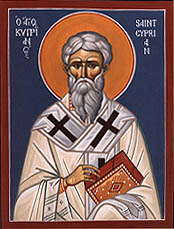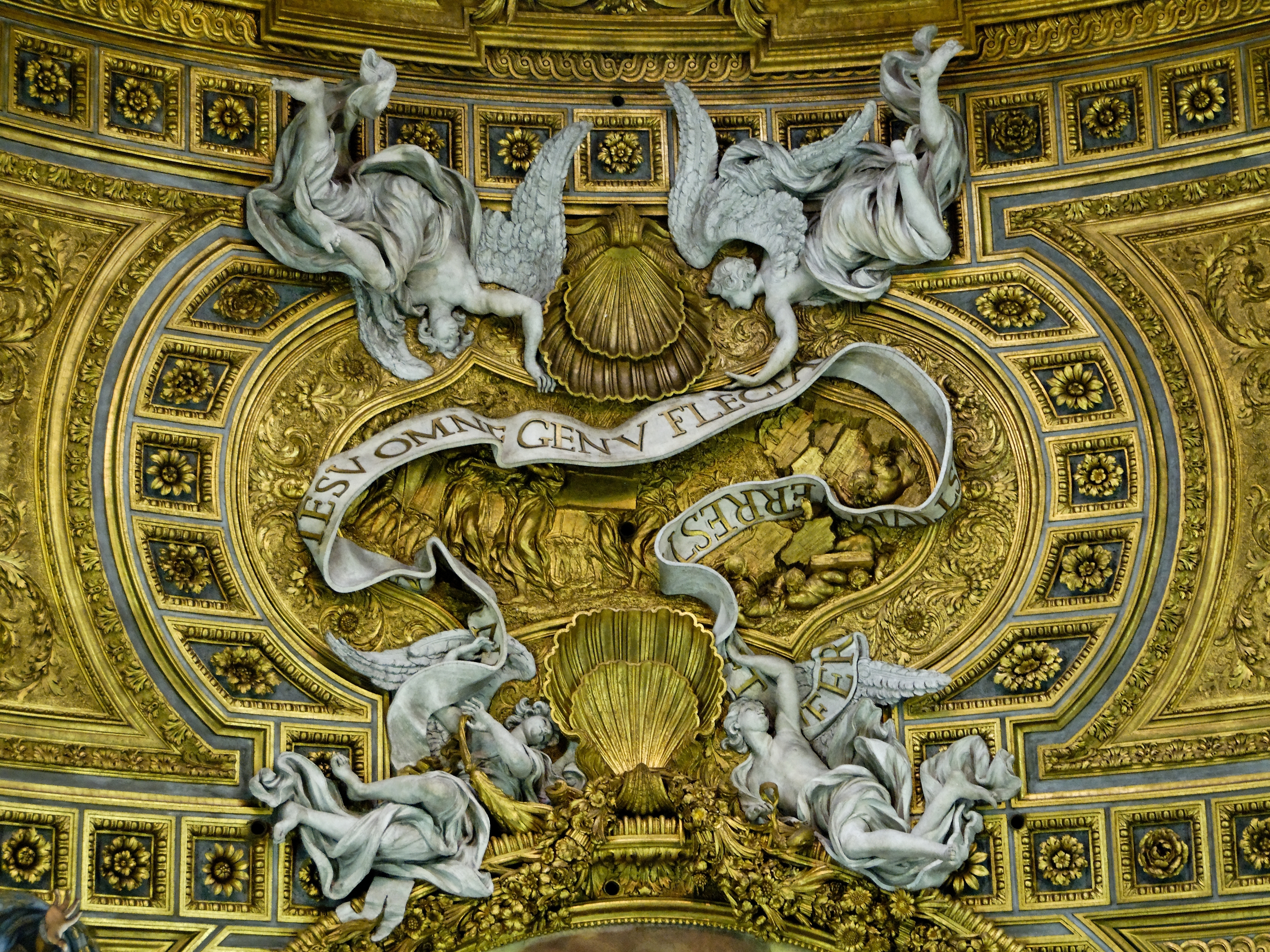|
Szymon Of Lipnica
Szymon of Lipnica (c. 1437 – 18 July 1482) was a Polish Roman Catholic priest and a professed member from the Order of Friars Minor. He became a sought after and noted preacher and took as his preaching inspiration Saint Bernardine of Siena and also was a strong proponent of popular devotions that he worked to spread. His beatification was celebrated under Pope Innocent XI in 1685 after the pontiff confirmed the local and popular "cultus" to the late Franciscan while the cause reopened centuries later; Pope Benedict XVI confirmed his heroic virtue and named him as Venerable in 2006 and canonized him as a saint mere months later on 3 June 2007 in Saint Peter's Square upon the confirmation of a 1943 miracle attributed to his intercession. Life Szymon was born in Poland around 1437 to the poor and pious Grzegorz and Anna in the small town of Lipnica Murowana. He moved to the capital of Kraków in order to pursue his education at the Jagiellonian college in 1454 while it was around ... [...More Info...] [...Related Items...] OR: [Wikipedia] [Google] [Baidu] |
Canonization
Canonization is the declaration of a deceased person as an officially recognized saint, specifically, the official act of a Christian communion declaring a person worthy of public veneration and entering their name in the canon catalogue of saints, or authorized list of that communion's recognized saints. Catholic Church Canonization is a papal declaration that the Catholic faithful may venerate a particular deceased member of the church. Popes began making such decrees in the tenth century. Up to that point, the local bishops governed the veneration of holy men and women within their own dioceses; and there may have been, for any particular saint, no formal decree at all. In subsequent centuries, the procedures became increasingly regularized and the Popes began restricting to themselves the right to declare someone a Catholic saint. In contemporary usage, the term is understood to refer to the act by which any Christian church declares that a person who has died is a sain ... [...More Info...] [...Related Items...] OR: [Wikipedia] [Google] [Baidu] |
Priest
A priest is a religious leader authorized to perform the sacred rituals of a religion, especially as a mediatory agent between humans and one or more deities. They also have the authority or power to administer religious rites; in particular, rites of sacrifice to, and propitiation of, a deity or deities. Their office or position is the 'priesthood', a term which also may apply to such persons collectively. A priest may have the duty to hear confessions periodically, give marriage counseling, provide prenuptial counseling, give spiritual direction, teach catechism, or visit those confined indoors, such as the sick in hospitals and nursing homes. Description According to the trifunctional hypothesis of prehistoric Proto-Indo-European society, priests have existed since the earliest of times and in the simplest societies, most likely as a result of agricultural surplus and consequent social stratification. The necessity to read sacred texts and keep temple or church rec ... [...More Info...] [...Related Items...] OR: [Wikipedia] [Google] [Baidu] |
Bernardine Of Siena
Bernardino of Siena, OFM (8 September 138020 May 1444), also known as Bernardine, was an Italian priest and Franciscan missionary preacher in Italy. He was a systematizer of Scholastic economics. His preaching, his book burnings, and his " bonfires of the vanities" made him famous/infamous during his own lifetime because they were frequently directed against sorcery, gambling, infanticide, witchcraft, homosexuals, Jews, Romani "Gypsies", usury, etc. Bernardino was later canonised by the Catholic Church as a saint – where he is also referred to as "the Apostle of Italy" – for his efforts to revive the country's Catholicism during the 15th century. Sources Two hagiographies of Bernardino of Siena were written by two of his friends; the one the same year in which he died, by Barnaba of Siena; the other by the humanist Maffeo Vegio. Another important contemporary biographical source is that written by the Sienese diplomat Leonardo Benvoglienti, who was another personal acquai ... [...More Info...] [...Related Items...] OR: [Wikipedia] [Google] [Baidu] |
Name Of Jesus
Two names and a variety of titles are used to refer to Jesus in the New Testament. In Christianity, the two names Jesus and Emmanuel that refer to Jesus in the New Testament have salvific attributes.''Bible explorer's guide'' by John Phillips 2002 page 147''All the Doctrines of the Bible'' by Herbert Lockyer 1988 page 159 After the crucifixion of Jesus the early Church did not simply repeat his messages, but focused on him, proclaimed him, and tried to understand and explain his message. One element of the process of understanding and proclaiming Jesus was the attribution of titles to him.''Jesus: a Gospel portrait'' by Donald Senior 1992 pages 145-147 Some of the titles that were gradually used in the early Church and then appeared in the New Testament were adopted from the Jewish context of the age, while others were selected to refer to, and underscore the message, mission and teachings of Jesus. In time, some of these titles gathered significant Christological significan ... [...More Info...] [...Related Items...] OR: [Wikipedia] [Google] [Baidu] |
Tarnów County
__NOTOC__ Tarnów County ( pl, powiat tarnowski) is a unit of territorial administration and local government (powiat) in Lesser Poland Voivodeship, southern Poland. It came into being on January 1, 1999, as a result of the Polish local government reforms passed in 1998. Its administrative seat is the city of Tarnów, although the city is not part of the county (it constitutes a separate city county). The county contains seven towns: Tuchów, south of Tarnów, Żabno, north-west of Tarnów, Wojnicz, south-west of Tarnów, Radłów, north-west of Tarnów, Ryglice, south-east of Tarnów, Ciężkowice, south of Tarnów, and Zakliczyn, south-west of Tarnów. The county covers an area of . As of 2006 its total population was 193,549, out of which the population of Tuchów was 6,501, that of Żabno 4,271, that of Wojnicz 3,404, that of Ryglice 2,784, that of Ciężkowice 2,378, that of Zakliczyn 1,556, and the rural population was 176,059 (including approximately 2,800 for th ... [...More Info...] [...Related Items...] OR: [Wikipedia] [Google] [Baidu] |
Ordained
Ordination is the process by which individuals are consecrated, that is, set apart and elevated from the laity class to the clergy, who are thus then authorized (usually by the denominational hierarchy composed of other clergy) to perform various religious rites and ceremonies. The process and ceremonies of ordination vary by religion and denomination. One who is in preparation for, or who is undergoing the process of ordination is sometimes called an ordinand. The liturgy used at an ordination is sometimes referred to as an ordination. Christianity Roman Catholic, Orthodox, Lutheran and Anglican churches In Roman Catholicism and Orthodoxy, ordination is one of the seven sacraments, variously called holy orders or '' cheirotonia'' (" Laying on of Hands"). Apostolic succession is considered an essential and necessary concept for ordination in the Catholic, Orthodox, High Church Lutheran, Moravian, and Anglican traditions, with the belief that all ordained clergy are or ... [...More Info...] [...Related Items...] OR: [Wikipedia] [Google] [Baidu] |
Seminarian
A seminary, school of theology, theological seminary, or divinity school is an educational institution for educating students (sometimes called ''seminarians'') in scripture, theology, generally to prepare them for ordination to serve as clergy, in academics, or mostly in Christian ministry. The English word is taken from the Latin ''seminarium'', translated as ''seed-bed'', an image taken from the Council of Trent document ''Cum adolescentium aetas'' which called for the first modern seminaries. In the United States, the term is currently used for graduate-level theological institutions, but historically it was used for high schools. History The establishment of seminaries in modern times resulted from Roman Catholic reforms of the Counter-Reformation after the Council of Trent. These Tridentine seminaries placed great emphasis on spiritual formation and personal discipline as well as the study, first of philosophy as a base, and, then, as the final crown, theology. The oldest ... [...More Info...] [...Related Items...] OR: [Wikipedia] [Google] [Baidu] |
Stradomka, Lesser Poland Voivodeship
Stradomka is a village in the administrative district of Gmina Bochnia, within Bochnia County, Lesser Poland Voivodeship, in southern Poland. It lies approximately south-west of Bochnia and south-east of the regional capital Kraków Kraków (), or Cracow, is the second-largest and one of the oldest cities in Poland. Situated on the Vistula River in Lesser Poland Voivodeship, the city dates back to the seventh century. Kraków was the official capital of Poland until 1596 .... References Stradomka {{Bochnia-geo-stub ... [...More Info...] [...Related Items...] OR: [Wikipedia] [Google] [Baidu] |
Convent
A convent is a community of monks, nuns, religious brothers or, sisters or priests. Alternatively, ''convent'' means the building used by the community. The word is particularly used in the Catholic Church, Lutheran churches, and the Anglican Communion. Etymology and usage The term ''convent'' derives via Old French from Latin ''conventus'', perfect participle of the verb ''convenio'', meaning "to convene, to come together". It was first used in this sense when the eremitical life began to be combined with the cenobitical. The original reference was to the gathering of mendicants who spent much of their time travelling. Technically, a monastery is a secluded community of monastics, whereas a friary or convent is a community of mendicants (which, by contrast, might be located in a city), and a canonry is a community of canons regular. The terms abbey and priory can be applied to both monasteries and canonries; an abbey is headed by an abbot, and a priory is a lesser de ... [...More Info...] [...Related Items...] OR: [Wikipedia] [Google] [Baidu] |
John Capistran
John of Capistrano (''Italian'': San Giovanni da Capestrano, '' Hungarian'': Kapisztrán János, ''Polish'': Jan Kapistran, ''Croatian'': Ivan Kapistran) (24 June 1386 – 23 October 1456) was a Franciscan friar and Catholic priest from the Italian town of Capestrano, Abruzzo. Famous as a preacher, theologian, and inquisitor, he earned himself the nickname “the Soldier Saint” when in 1456 at age 70 he led a crusade against the invading Ottoman Empire at the siege of Belgrade with the Hungarian military commander John Hunyadi. Elevated to sainthood, he is the patron saint of jurists and military chaplains, as well as the namesake of the Franciscan missions San Juan Capistrano in Southern California and San Juan Capistrano in San Antonio, Texas. Early life As was the custom of this time, John is denoted by the village of Capestrano, in the Diocese of Sulmona, in the Abruzzi region, Kingdom of Naples. His father had come to Italy with the Angevin court of Louis I of Anjou ... [...More Info...] [...Related Items...] OR: [Wikipedia] [Google] [Baidu] |
Jagiellonian University
The Jagiellonian University ( Polish: ''Uniwersytet Jagielloński'', UJ) is a public research university in Kraków, Poland. Founded in 1364 by King Casimir III the Great, it is the oldest university in Poland and the 13th oldest university in continuous operation in the world. It is regarded as Poland's most prestigious academic institution. The university has been viewed as a guardian of Polish culture, particularly for continuing operations during the partitions of Poland and the two World Wars, as well as a significant contributor to the intellectual heritage of Europe. The campus of the Jagiellonian University is centrally located within the city of Kraków. The university consists of thirteen main faculties, in addition to three faculties composing the Collegium Medicum. It employs roughly 4,000 academics and provides education to more than 35,000 students who study in 166 fields. The main language of instruction is Polish, although around 30 degrees are offered in Eng ... [...More Info...] [...Related Items...] OR: [Wikipedia] [Google] [Baidu] |





.jpg)